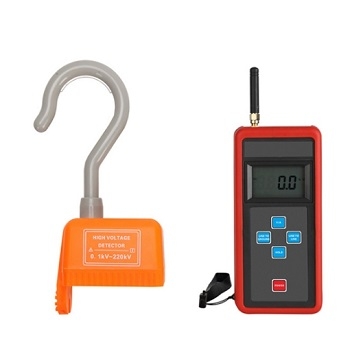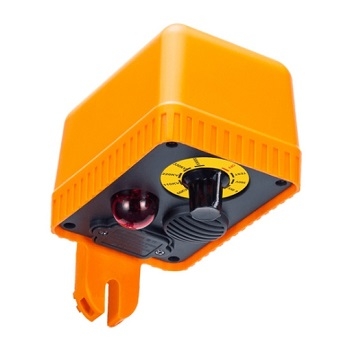Using a high-voltage tester safely and effectively is crucial when working with high-voltage electrical systems. High-voltage testers are typically used to measure voltage levels beyond what standard voltage testers can handle. These testers are often used in industrial, utility, and power distribution settings. sisco online shop will show you how to use it.
General Use Steps
1. Wear Appropriate Personal Protective Equipment (PPE): Before handling any high-voltage equipment, make sure you are wearing the necessary PPE, including insulated gloves, safety glasses, and appropriate clothing. Ensure that your PPE is in good condition and properly rated for the voltage level you will be working with.
2. Inspect the Tester: Before use, inspect the high-voltage tester for any visible damage or defects. Make sure the tester is clean, dry, and free from any contaminants that could affect its accuracy or safety.
3. Check the Voltage Rating: Verify that the high-voltage tester is suitable for the voltage level of the system you will be testing. Using a tester with the wrong voltage rating can be dangerous.
4. De-energize the Circuit: Before performing any tests, ensure that the circuit is de-energized. Follow proper lockout/tagout procedures and confirm that no voltage is present using a low-voltage tester, a phase tester, or a similar device designed for safe voltage checking.
5. Connect the Tester: Connect the high-voltage tester to the test points in the circuit, following the manufacturer's instructions. Make sure the connections are secure and free from any loose or damaged wires.
6. Set the Tester: Configure the tester to the appropriate test settings. High-voltage testers may have various settings and options depending on the specific type of measurement you need to perform.
7. Measure Voltage: Carefully and precisely measure the voltage. High-voltage testers are equipped with digital displays or analog meters that indicate the voltage level. Read the measurement and take note of it.
8. Record and Document: Document the test results, including the date, time, location, and specific test points. This documentation is essential for record-keeping, safety compliance, and troubleshooting.
9. Disconnect the Tester: After completing the test, disconnect the high-voltage tester from the circuit carefully. Ensure that all connections are removed safely and without causing any damage.
10. Store the Tester: Store the high-voltage tester in a suitable carrying case or storage area designated for electrical test equipment. Keep it clean and protected from damage and environmental factors.
11. Dispose of Voltage Safely: If you are working with high-voltage equipment that stores energy (such as capacitors), make sure to discharge any stored voltage safely before handling or servicing the equipment.
Key Functions and Applications
1. Voltage Measurement: The primary function of high-voltage testers is to measure the voltage in high-voltage systems accurately. They are capable of measuring voltage levels that standard voltage testers cannot handle.
2. Insulation Resistance Testing: High-voltage testers are used to assess the insulation resistance of electrical components and cables. This test helps identify potential weaknesses or faults in the insulation, which can lead to electrical breakdowns.
3. Dielectric Strength Testing: These testers are used to determine the dielectric strength of insulating materials. The dielectric strength is the maximum voltage an insulating material can withstand without breaking down.
4. Continuity Testing: High-voltage testers can check the continuity of conductors and connections in high-voltage systems to ensure they are intact and functioning as intended.
5. Hipot Testing (High-Potential Testing): Hipot testing is a type of high-voltage testing used to assess the electrical integrity of insulation and conductors by applying a higher-than-normal voltage. It helps detect insulation defects and weaknesses.
Common Types
1. DC High-Voltage Testers: These testers generate a direct current (DC) high-voltage output for testing the insulation resistance of cables, transformers, and other high-voltage components. They are used to evaluate the dielectric strength of insulation materials.
2. AC High-Voltage Testers: AC high-voltage testers are designed to produce alternating current (AC) high-voltage output for various insulation testing applications, such as hipot testing and dielectric strength testing.
3. Partial Discharge Testers: Partial discharge testers are used to detect and measure partial discharges in high-voltage equipment, such as transformers and cables. Identifying partial discharges helps prevent equipment failure.
4. Impulse Voltage Testers: Impulse voltage testers generate high-voltage impulses or waves with specific waveforms to assess the insulation and performance of equipment, especially in high-voltage power systems.
5. Resonant Test Systems: Resonant test systems are designed for testing power capacitors and high-voltage insulation components. They use resonant circuits to efficiently test these components at high voltages.
6. Arm type high voltage detector: Arm type high voltage detector provides a safe, practical, and convenient new high-voltage alarm device for near-electricity operators, high voltage alarm is worn on the upper part of the outermost arm of the operator's work clothes, with a unique automatic trigger detection function to ensure the safety of personnel working with electricity.
7. Cable Testers: High-voltage cable testers are specialized for testing the insulation, integrity, and faults in high-voltage cables, often used in cable fault location and diagnostics.
8. Non-Contact High Voltage Tester: Non-contact high voltage detector has red LED and sound/light alarm, 9 voltage gears 380V~275kV. Choose a safe, practical and convenient non-contact high voltage tester for electricity inspectors to ensure the safety of operators.
9. Transformer Oil Testers: Transformer oil testers are used to evaluate the dielectric strength and condition of insulating oil in power transformers and other high-voltage equipment.
High-voltage testers play a critical role in the electrical industry, especially in power generation, transmission, and distribution, as well as in industries where high-voltage equipment is used. It is important to use these testers correctly and safely, following established procedures and safety guidelines to prevent accidents and ensure the reliable performance of high-voltage systems.

